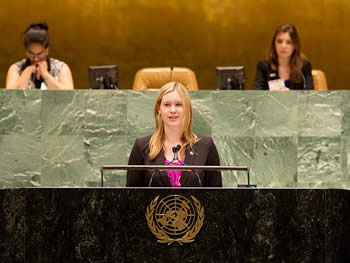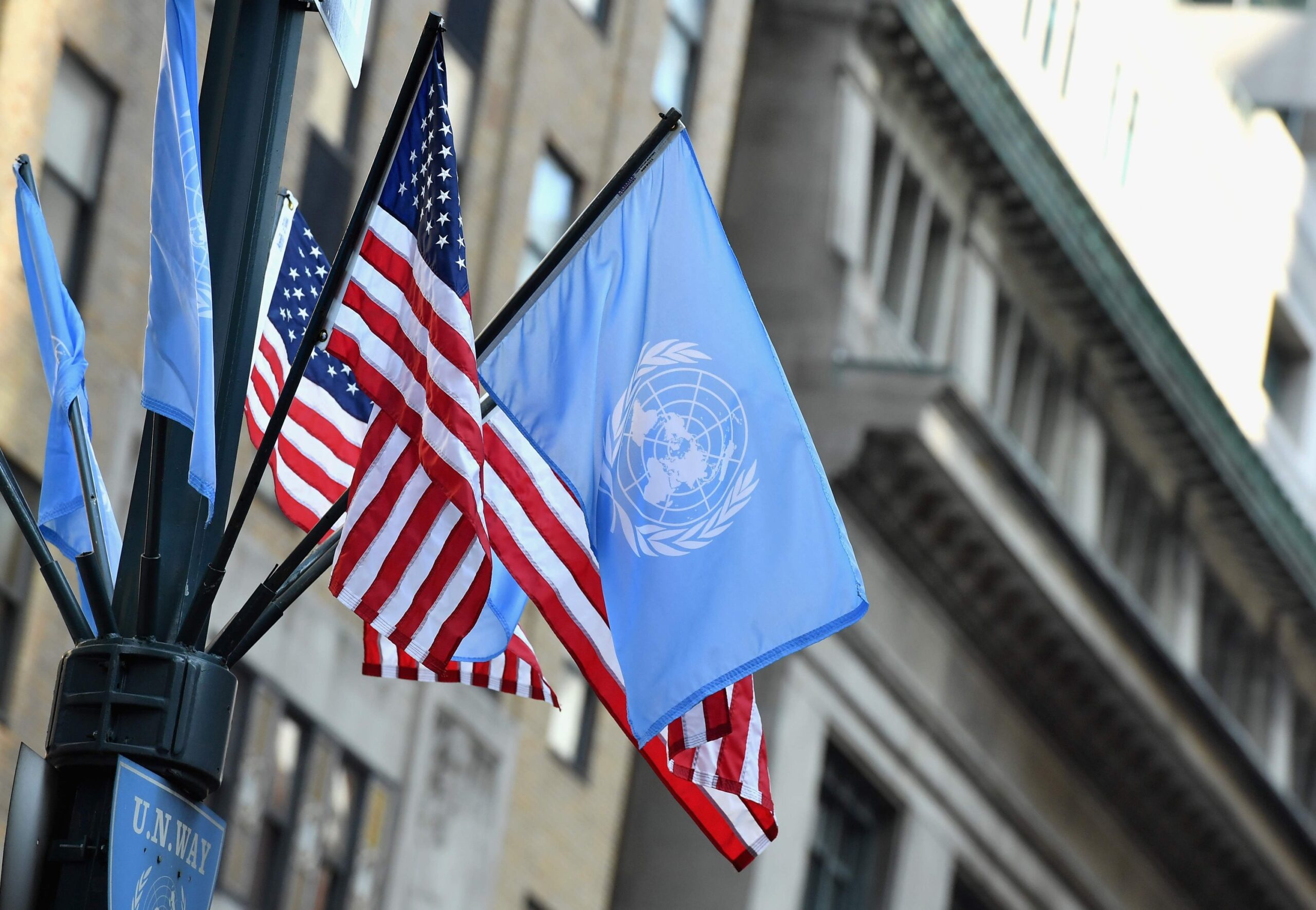Using Social for Social Good: An Update from ’12-’13 Youth Observer Brooke Loughrin
Since the end of my term as the first-ever U.S. Youth Observer at the United Nations (2012-2013), not a day has gone by that I have not thought about the impact of the experience on my life and on the lives of the other UN Youth Delegates. In my current role as a Communications Analyst (Social Good) at Deloitte Digital, I continue to use the knowledge and skills I developed as the U.S. Youth Observer to help create strategic initiatives, platforms, and campaigns for a variety of high-profile non-profit and business clients interested in development, global health, philanthropy, education, and women and girls’ empowerment.
On a typical day, I start by monitoring online news sites, blogs, forums, and social media channels to identify notable news, mentions, and conversations concerning organizations, individuals, and issues of importance to clients. For example, I might track all of the news related to polio eradication campaigns or the opening of the UNGA. Next, I summarize these findings in reports that include insights and trends in real-time and identify opportunities and recommendations for clients to engage in discussions across a wide range of platforms. In the afternoons, I regularly meet with team members and clients to talk about upcoming initiatives and campaigns or with local non-profits to help them use social media to engage donors and bring communities together through digital storytelling.
As the number of social media users increases worldwide, digital storytelling enables everyday people to share aspects of their life story and to present an idea to a global audience. For example, the online lending platform Kiva uses social media to cultivate communities between borrowers and lenders by sharing stories of how microloans have created opportunities and changed lives.
Throughout my term as the U.S. Youth Observer, I saw first-hand that efforts to address our shared development goals, such as women’s and children’s health and education, cannot be successful without confronting complex policy problems, such as international migration and water security. These problems do not recognize traditional boundaries between academic disciplines or nation states, and therefore require unprecedented cooperation between diverse sets of actors in international organizations, governments, the private sector, and civil society. One of the most exciting parts of my role is using the understanding of organizations and individuals in development, global health, philanthropy, and education that I developed during my term to help clients build active communities of influencers and advocates.
In the past year, we have continued to see the power of social media to help private foundations and public charities raise awareness and achieve their goals. The ALS Ice Bucket Challenge raised $100.9 million for the ALS Association in 30 days compared to $2.8 million during the same period in the previous year. Since 2012, #GivingTuesday has connected charities, families, businesses, community centers, and students for one common purpose: to celebrate generosity and to give back.
Social media is also being used to engage new audiences in the fight for gender equality. Most notably, UN Women’s #HeforShe Campaign has reframed gender equality as a human rights issue that requires the full participation of men in the fight against all forms of violence and discrimination faced by women and girls. In celebration of International Women’s Day, Facebook hosted a Q&A with Emma Watson to talk about her involvement in HeForShe that was viewed over 5 million times on social media and nearly 300,000 men, including U.S. President Barack Obama, U.N. Secretary-General Ban Ki-Moon, Matt Damon, and Eddie Redmayne, have pledged their commitment to the campaign.
Since speaking at the 2012 Social Good Summit on “Mobilizing Young People for the Next Generation of Social Good”, I continue to be amazed by the ways world leaders, philanthropists, aid workers, journalists, and students are using social media to share ideas and plans for ending poverty, empowering women and girls, and building peace through shared understanding. Social media has also increased participation in the debate surrounding the post-2015 Development Agenda and the creation of the Sustainable Development Goals.
As for me, not a day goes by that I’m not grateful for the opportunity to have served as the first-ever U.S. Youth Observer and I can’t wait to continue to use the knowledge and skills I developed during my term in my career at Deloitte Digital and beyond!
Brooke can be reached on Twitter at @bloughrin1.




